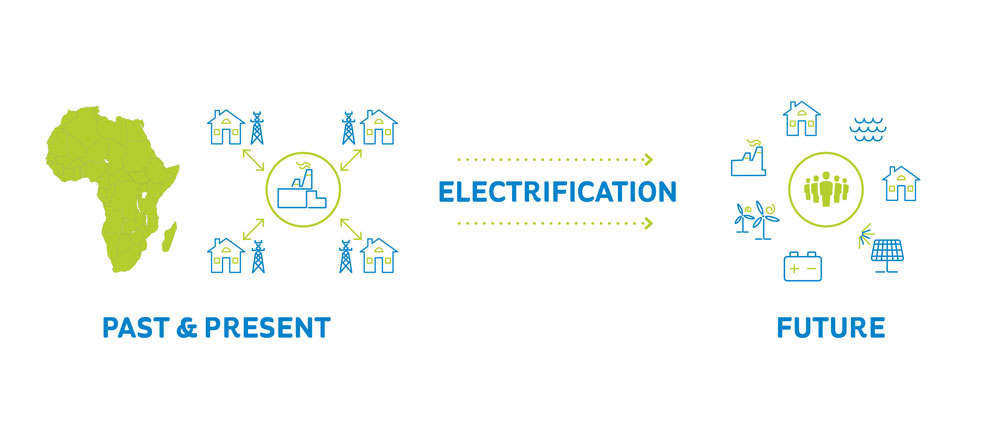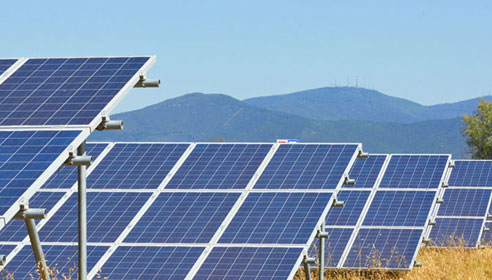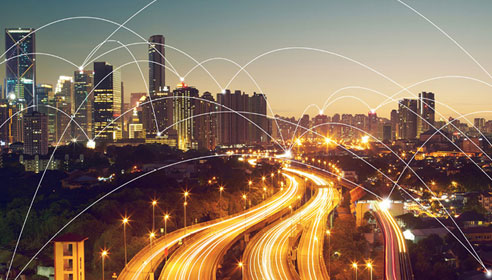Since 1927, the Electricity Supply Board of Ireland - ESB has brought the power of electricity to the cities, towns, villages, and remote corners of Ireland. Electrifying Ireland underpinned the country’s economic and social change from an underdeveloped rural nation to one of the most successful global economies enjoying the 2nd highest standard of living in the world. In 1975, our global engineering consultancy, ESB International, was formed, bringing expertise, skills, and leadership to help energy companies and developers unlock the value in projects in over 120 countries worldwide. Key to ESB International’s success is our deep-rooted utility background and fully integrated structure, giving us a comprehensive and unique understanding of all aspects of the energy sector.
Low-Carbon Strategy
ESB’s ‘Brighter Future’ strategy is focused on leading the transition to a low-carbon energy future based on clean, reliable, affordable electricity. ESB International are therefore well placed to meet client energy needs by bringing the best of our capabilities to deliver innovative and value-driven solutions for a low-carbon world. Our knowledge and expertise place us in a prime position to help countries and utilities globally to address the urgent challenge of achieving lower carbon emissions, which is even more crucial due to the rapid changes in the global energy landscape.
Changing Energy Landscape
Power utilities at various levels in the electricity production (generation) and supply (transmission & distribution) chain are going through unprecedented change arising from the growth in renewable and distributed generators, reduction in thermal generation and societal change where electricity users want more control and choice. Mature electricity markets with long-established infrastructure will need to re-develop their networks and modernise their operations, while regions that are still developing with a growing need for infrastructure expansion can leapfrog these mature markets and design their infrastructure more cost-effectively to cope with these challenges.
Drivers of Change
The key drivers of change for the energy market have been:
- A reduction in the cost of renewable generation.
- Growth of renewables in the generation mix.
- The geographical location of renewable generators.
- Pressure on governments to decarbonise.
- Decentralisation of generation at both transmission and distribution level.
- Societies moving towards prosumers.
- Increase in private sector participation and increase in electricity consumption to power vehicles (emobilty).
- Temperature control (Heat pumps in Europe and air conditioning in Africa).
Transmission of the Past and Present
Many transmission systems in Africa are still expanding with existing transmission systems aging, and, in some countries, these systems are deteriorating due to underinvestment and overloading.
In some African countries, there are both developing expanding grids and aging passive grids. As the share of variable energy technologies (renewables) grows, the role and function of transmission system operators will become more complex. There will be a need to build their capabilities to balance national power systems through dispatching flexible resources. This will include technologies and ancillary services which can provide adequate system strength, inertia, reactive power, and other required auxiliary services to maintain system reliability and quality.
Developing Grids | Mature and Aging Passive Grids |
New and extended grids | Changing energy landscape |
Fast-tracked yet cost effective solutions | Efficient and safe operation |
Robust and time-tested technology | Grid resilience |
Sufficient reliable supply | New business models |
Transmission of the Future
The future transmission system will look different and will be managed differently. In the past, electricity flowed from large transmission-connected generation stations to passive distribution networks. In the future, electricity will flow far more dynamically between transmission and distribution-connected parties, including renewables, electric vehicles, and battery storage, while ensuring security of supply. The role of the networks is changing to facilitate this transition. The intermittency of generation supply from utility-scale renewables and then the increase in distributed microgeneration with battery storage will also mean higher intermittency where future demands will create even more challenges increasing the need for data and controllability at distribution low voltage levels.
Future Power Grid Business
- Bidirectional power flows, intermittent infeeds
- Market disruption and liberalisation
- Economically viable solutions
- Grid operators and the new future
- Decentralisation of generation
Opportunities for Africa
Electricity sectors in Africa that are still growing and evolving can plan overall system expansion to allow for future changes to include bringing renewable generation closer to consumption centres. This would contribute to a reduction in losses and improve reliability. To this end, electricity sectors in Africa can learn from the utilities in other electricity markets going through this change and plan their journeys accordingly. Electricity sectors in a growth phase can also assess if the adoption of microgeneration such as solar PV, hydro, wind etc. as examples, is beneficial to the sector as a whole and compare this with the development of large-scale renewable generation hubs and an associated transmission system instead of large-scale distributed electricity generation capability.
Moving to the Future

Challenges for Africa
The challenge facing many African electricity sectors is that the networks and transmission systems are extending, and at the same time, the existing infrastructure is not attracting the investment required for effective maintenance and reinforcements. Most of the transmission and networks in Africa are passive grids, especially at distribution level, and traditionally utilities do not have sufficient planning capability, asset records or systems to accurately model systems that can support effective strategic planning studies. The Development Banks, through their consultants, do some of this work, but the reliance on institutions for funding based on immediate short-term requirements leaves the utilities unable to invest and upgrade their systems pro-actively. This is compounded by the rapid growth of renewable generation and the adoption of distributed energy generation that will strain systems unless there are timely planning processes put in place to support and justify targeted investments for the future.
Leading the Transition
Most African countries have experienced an increase in digitisation because of the success of the mobile telecom industry leading to high levels of connectivity and data availability in towns and villages. This example, coupled with the growth in the off-grid sector, has shown that private sector participation is possible and that the supply of electricity can be decentralised and scaled up from one customer to hundreds. It is, therefore, possible for Africa to leapfrog mature electricity markets and plan its system expansion by considering a country strategy for renewable generation and distributed renewable energy. ESB International has the expertise and skills required for this process and is already guiding utilities in their future plans by utilising the experience we have gained in Ireland, Europe and worldwide.








